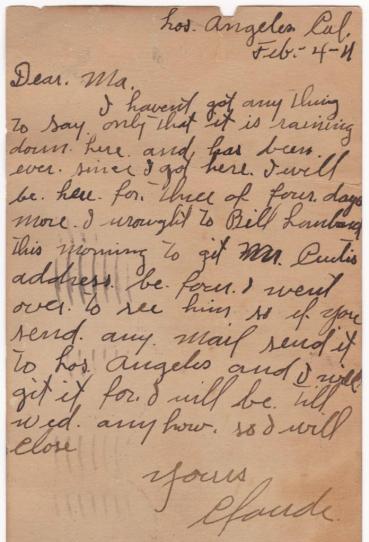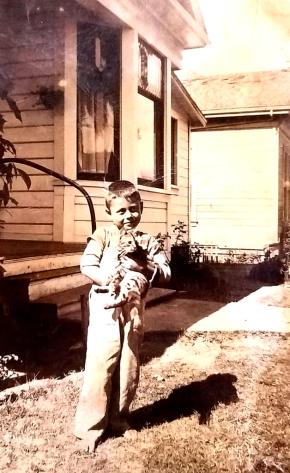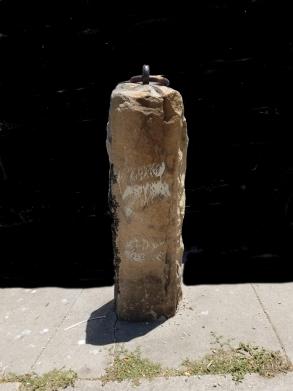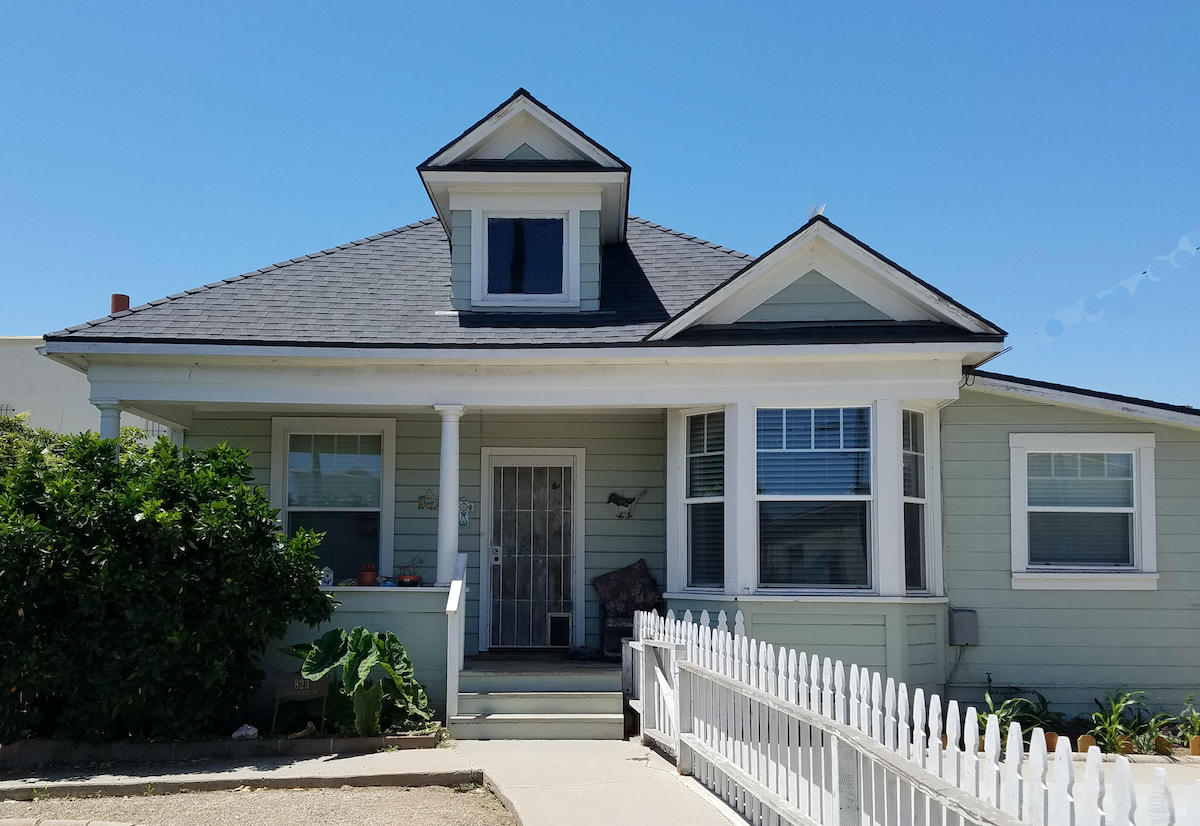Address: 823 East Haley Street

You never know what you might find when you open a wall in an old house. Construction work on the home at 823 East Haley Street uncovered a 1911 postcard. How or why the postcard was in the wall will probably remain a mystery, but when I saw a photo of the card posted on Facebook, I knew I had to dive down the research rabbit hole.
Way back when, Milpas Street was the edge of development on the Eastside of Santa Barbara. There were some scattered homes, the Franklin School at the corner of Milpas and Montecito, and a brick factory at Cota and Milpas. The main route to the Eastside was the streetcar that ran along Haley Street from State Street to Quarantina. By the 1920s, the tracks ran in front of this home to Milpas. The tracks are still visible when the street is being repaired.
Stephen and Harriet Naylor built this cozy home in 1901 and lived in it as the decades passed and their family grew. Naylor was an Englishman who immigrated to the United States in the 1850s. He served in the Union Army during the Civil War and was taken prisoner by the Confederates. After settling in Santa Barbara in the 1890s, he was active in veterans’ organizations.
Naylor was a jack-of-all-trades: deliveryman, grocery store owner, and an active member of the East Side Improvement Club. The family sold hay and ducks and chickens at the home, which shows the rural nature of the area at that time. They also rented out some of their rooms.
The Naylors’ daughter Edith married Frank B. Reily in 1890, and they raised their family here. Two of their sons served in the armed forces during World War I. The family probably hung a flag with two large stars in the front window of the home to represent their sons in the military.
Fortunately, both sons survived the war and the 1918-1919 flu pandemic. One of the sons — Claude Reily — the author of the postcard, later opened an ironwork shop at 423 North Salsipuedes. His father managed the shop.

Claude Reily was a well-respected member of the community. “He has never feared that laborious effort which must always precede ascendancy in the business world and has many friends whose esteem he has won and retained by reason of his high principles and fine personal qualities” (History of Santa Barbara County, California, Michael James Phillips, 1927).
This Queen Anne cottage-style home is very similar to the home at 223 East Victoria that I wrote about in my March 2020 column, which was built at the same time. There are probably numerous other Santa Barbara homes built in this style.
In 1943, the Reilys sold their family home to the second owners — the Eliseo and Christina Escobar family from Stockdale, Texas. The home has remained in the family to this day. The descendants living in the home are Robert Escobar, Martha Fragosa, and John Fragosa. They have fond memories of visiting their grandparents here and attending Christmas parties.

There is a sandstone hitching post in front of the home. The number of these posts has dwindled over the years. A count conducted in 1942 turned up 265 hitching posts in our city. By 1975, there were only about 160. And today? I asked S.B. urban historian Nicole Hernandez. She told me that we don’t really know the present number. She suggested that counting/locating hitching posts might be a good project for a local group to undertake.
The home’s owners say they appreciate the generous 10-foot-high ceilings and the convenient location of the house. They are especially proud of the hitching post and told me that they occasionally hear people playing with the iron ring to make a ringing sound. It is a sound that brings back echoes of the past in Santa Barbara.
Please do not disturb the home’s residents.
Betsy J. Green is a Santa Barbara historian, and author of Discovering the History of Your House and Your Neighborhood, Santa Monica Press, 2002. Her website is betsyjgreen.com.





You must be logged in to post a comment.